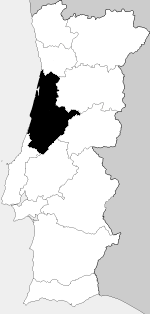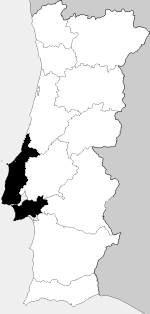
From left to right, the old provinces of Beira Litoral and Estremadura, now extinct.
Estremenho is a dialect of European Portuguese spoken in the former provinces of Estremadura and Beira Litoral and is part of the central-southern dialects. [1]
Contents
The variety of Lisbon, which is used to form the basis for the pattern of European Portuguese, is within this dialect. [2] The Lisbon dialect that serves as the basis of standard European Portuguese is the one used for official and written purposes in Angola, Cape Verde, East Timor, Guinea-Bissau, Macau, Mozambique, and São Tomé and Príncipe.

